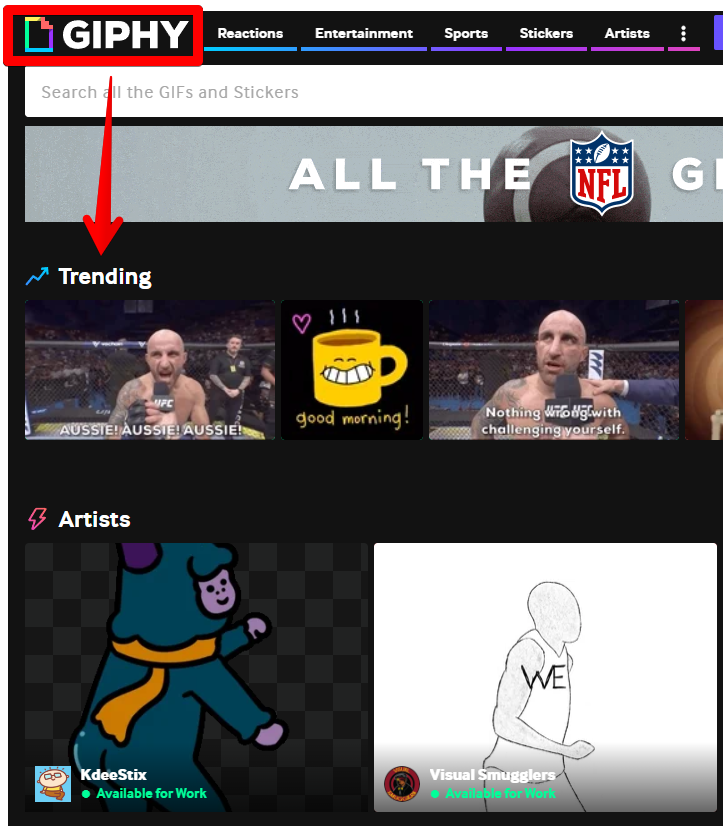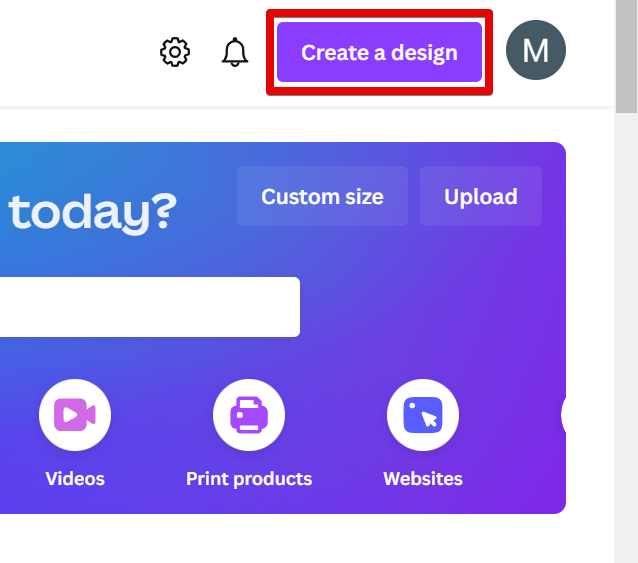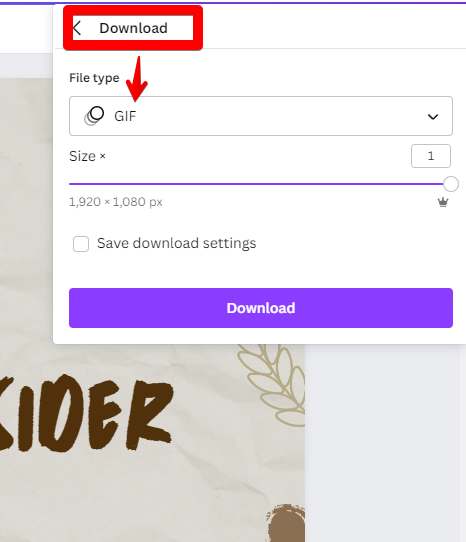There’s no denying it, GIFs are having a moment in 2024.
They’ve been around for a while now, but in recent years, they’ve exploded in popularity and are now one of the most popular ways to communicate online. With platforms like Giphy and Tenor, it’s easy to find the perfect GIF for any situation.
But what if you want to make your own GIF? Can you make a GIF with a transparent background in Canva?
Lucky for you, we’ve got answers. Read on!
What exactly is a GIF?
To put it simply, a GIF (also known as a “gif” or “jiff”) is an image file. A GIF can be used to create static images just like JPEG or PNG files. However, the GIF format has a unique feature: it can be used to make moving pictures like the one shown below.
Since GIFs aren’t technically videos, we refer to them as “animated images.” They resemble flipbooks more than anything else. One problem is that they are silent (you probably noticed that). And it just so happens that GIFs are commonly used for animations, even though that wasn’t the original intent. Because GIF files can store multiple images, it was discovered that the images within them could be loaded sequentially (much like a flipbook) with the proper decoding.
The GIF format was first released by CompuServe in 1987, and its last revision was made in 1989. In other words, GIF has been around longer than 35% of the population of the United States and was created two years before the World Wide Web. A large portion of internet culture still revolves around it today, as it helped define early GeoCities websites, MySpace pages, and email chains. The GIF format may even be more widely used now than it was a decade ago.
Create Your Own Animated GIFs and Have Fun
Unless you’re making a GIF from scratch (don’t worry about that), you’ll need to start with a video. You could use a video from your phone’s storage or one from YouTube; it doesn’t matter.
The length of this clip is not particularly relevant. The video can be cut down to a suitable GIF size using whatever GIF creation platform you prefer to use. Even if you don’t want to, you might be able to add subtitles and special effects.
Create your own animated GIFs with these top-notch apps:
- A large number of websites exist specifically for creating GIFs. You should use a service like Imgur, Gifycat, or GIPHY to convert your videos into GIFs because they’re simple to use and the resulting HTML5 videos are of higher technical quality. Simply add a video file or URL to the GIF maker to get started. Then it will provide you with tools to edit your GIF as you see fit.

- Based on an App: Creating GIFs while traveling is possible. The most well-known applications for creating GIFs are GIPHY CAM (iOS/Android) and GIF Maker (iOS/Android). The GIF maker allows you to drop a video into it and customize the length to your needs. (On Android and iOS, you can also use Google Gboard to create GIFs.)
- The Following Functions Can Be Found in Most Digital Art Programs: It’s a pain in the neck to make GIFs in Photoshop, GIMP, Sketchbook, or any of the other popular digital art programs. If customization of your GIF is a priority, this is a good option to consider. (remember that HTML5 videos can be created on sites like Gifycat, which look superior to regular GIFs.)]
- Canva! With everything you need to create both simple and intricate GIFs at your fingertips, Canva is the ideal online GIF maker and video editing platform.
Can you make a GIF with a transparent background in Canva?
The answer is yes! Creating a GIF with a transparent background in Canva is easy and only takes a few steps.
1. First, you’ll need to create a new design. To do this, click on the “Create a design” button on the homepage.

2. Next, select “GIF” from the list of available design types. This will open up a new design window specifically for creating GIFs.
3. Once you’re in the design window, you’ll see that the background is automatically set to transparent. You can add images, text, or other elements to your GIF just like you would with any other Canva design.
4. When you’re happy with your creation, simply click on the “Download” button and select “GIF” from the list of available formats. And that’s it! You’ve successfully created a GIF with a transparent background.

So there you have it! Creating a GIF with a transparent background in Canva is easy and only takes a few steps. So go ahead and give it a try!
The popularity of GIFs on online platforms
Despite having been there since the dawn of the internet, GIFs have only recently entered the public because to the proliferation of high-speed networks, mobile messaging apps, and internet memes. Since more and more people, especially younger people, are using GIFs to communicate every day, it’s no surprise that brands are now trying to figure out how to use this hot medium.
There are three reasons why GIFs are still popular. First of all, it lets people quickly show how they feel when words just won’t do. Second, the pop culture references it contains give the user a sense of who they are. Third, it takes advantage of the meme culture, which is always making new references that add to our digital culture as a whole.
Compared to text and still images, GIFs can pack a lot of information into something that’s easy to share. This was a unique advantage that GIFs had in the early days of the internet, before online video became popular. In particular, the most common types of GIFs are reaction GIFs, which are generic GIFs that show a single emotion. Whether you’re happy, sad, or shocked, you can usually find a GIF that perfectly expresses how you’re feeling without having to awkwardly try to put it into words. In this day and age of mobile messaging and rich media support everywhere, it’s clear that a small looping animated photo is a big draw for consumers and, by extension, for tech companies and brands.
GIFs have also been around for a long time because most of them are taken from TV shows, movies, or even news clips, which means they often have pop culture references that tie them to a certain identity. So, the GIFs you choose to show how you feel show something about your preferences, viewpoints, and even who you are.

For example, someone who likes football and someone who likes Disney cartoons would choose very different GIFs to show how sad they are. A movie fan might always have the perfect quote from an old movie, while a reality TV fan will always have the funniest reaction GIFs ready. Studies have shown that people in different countries like different GIFs.
This is partly because each country’s culture is different. (Although some things do cross borders, like cartoons and memes.) The idea behind this is that what you watch and read in the media depends on your personal interests and cultural background, which are then reflected in your choice of GIFs.
GIFs do more than just spread pop culture…
They have also become a bigger part of digital culture, which is where many memes come from. Many memes have humble and obscure beginnings, which means they don’t have any original cultural references like GIFs taken from media products do. However, because GIFs are so popular, they spread and become pop culture references themselves.
At its core, a meme is an image that goes viral and shows (usually in a funny way) a certain feeling, behavior, or social-cultural idea that people can relate to and share. It’s like telling a joke on the computer without having to enter a damn syllable.
And because GIFs are animated, they have more visual information than still images and can tell jokes better because of it. It’s not surprising that most memes today are GIFs instead of still images.
Like no other digital media, GIFs allow users to quickly and easily convey their mood, sense of humor, and personality all at once through a blend of emotional shorthand and pop culture references. The best thing about GIFs is how well they let you say what you want to say. This is also why they have been so popular for so long.
Conclusion
Yes, creating GIF with transparent background is easy. You can add images, text, or other elements to your just like you would with any other Canva design. When you’re happy with your site creation, simply click on the “Download” button and select “GIF” from the list of available formats.